APAH: content areas 1 + 9: global prehistory + pacific
1/23
There's no tags or description
Looks like no tags are added yet.
Name | Mastery | Learn | Test | Matching | Spaced |
|---|
No study sessions yet.
24 Terms
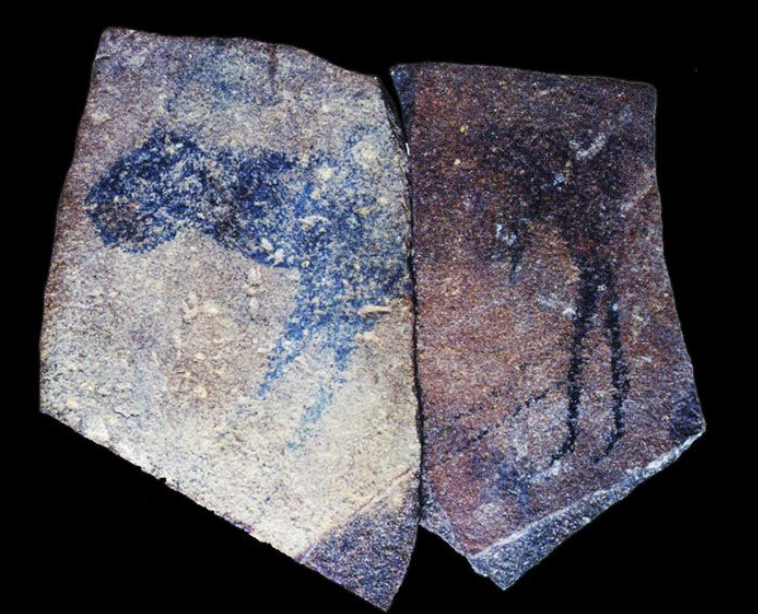
Apollo 11 Stones
Period: Paleolithic
Location: Namibia, South Africa
Material/Technique: Charcoal on stone
Importance: Culture at this time was based on the hunter-gatherer lifestyle and just existing, held rituals to influence and control animal behavior
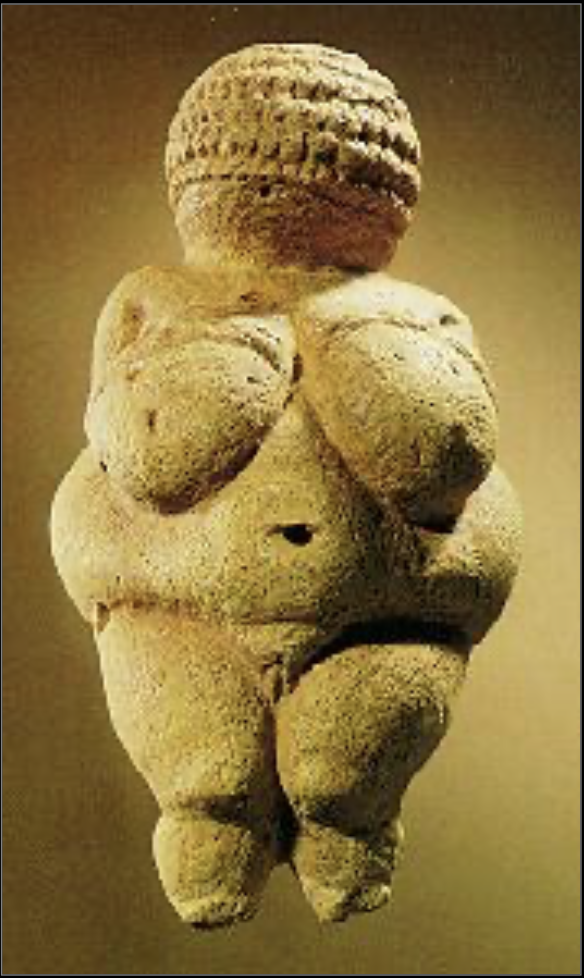
Venus of Willendorf
Period: Paleolithic
Location: Willendorf, Austria
Material/Technique: Limestone, subtractive method
Importance: fertility and child-bearing goddesses, may have been held during labor
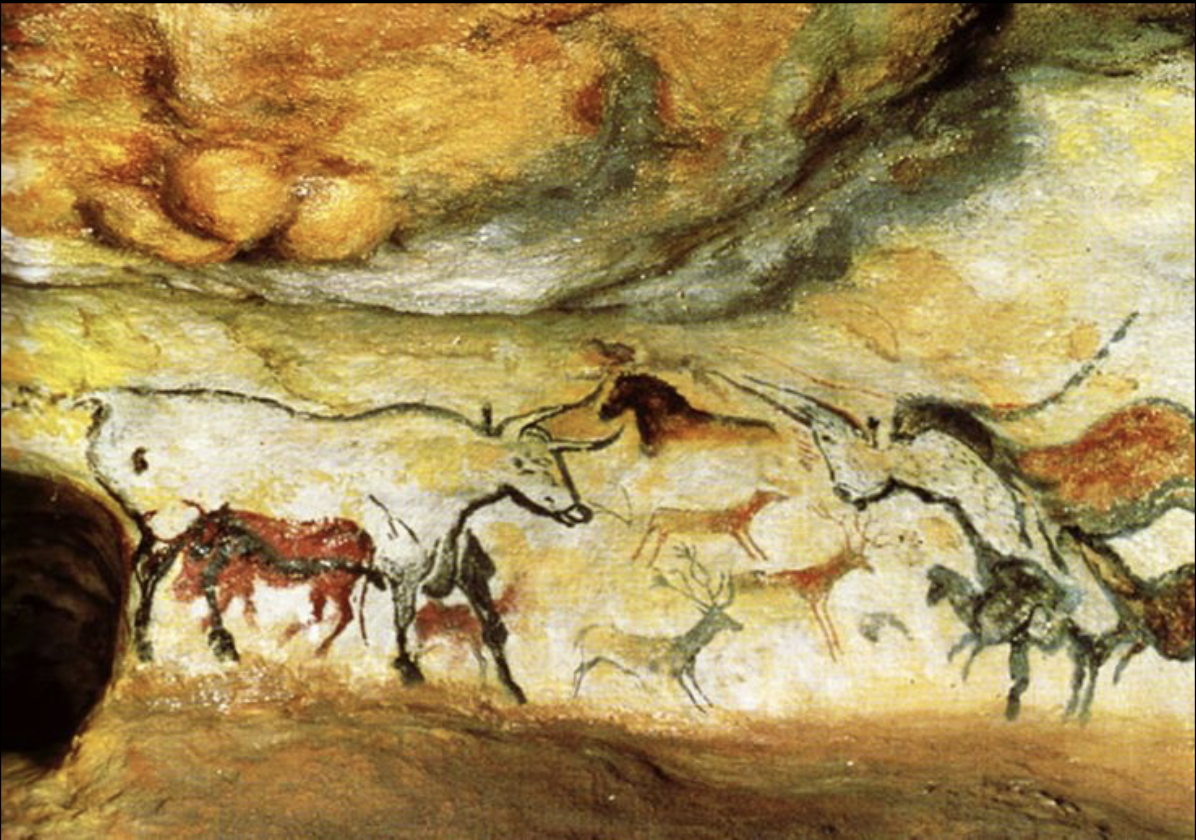
Lascaux Caves
Period: Paleolithic
Location: Dordogne, France
Material/Technique: Paint made from natural resources, walls scraped to make even for painting
Importance: Sacred space, artistry becomes more of a specialized skill (social-stratification) in 15,000-13,000 BCE
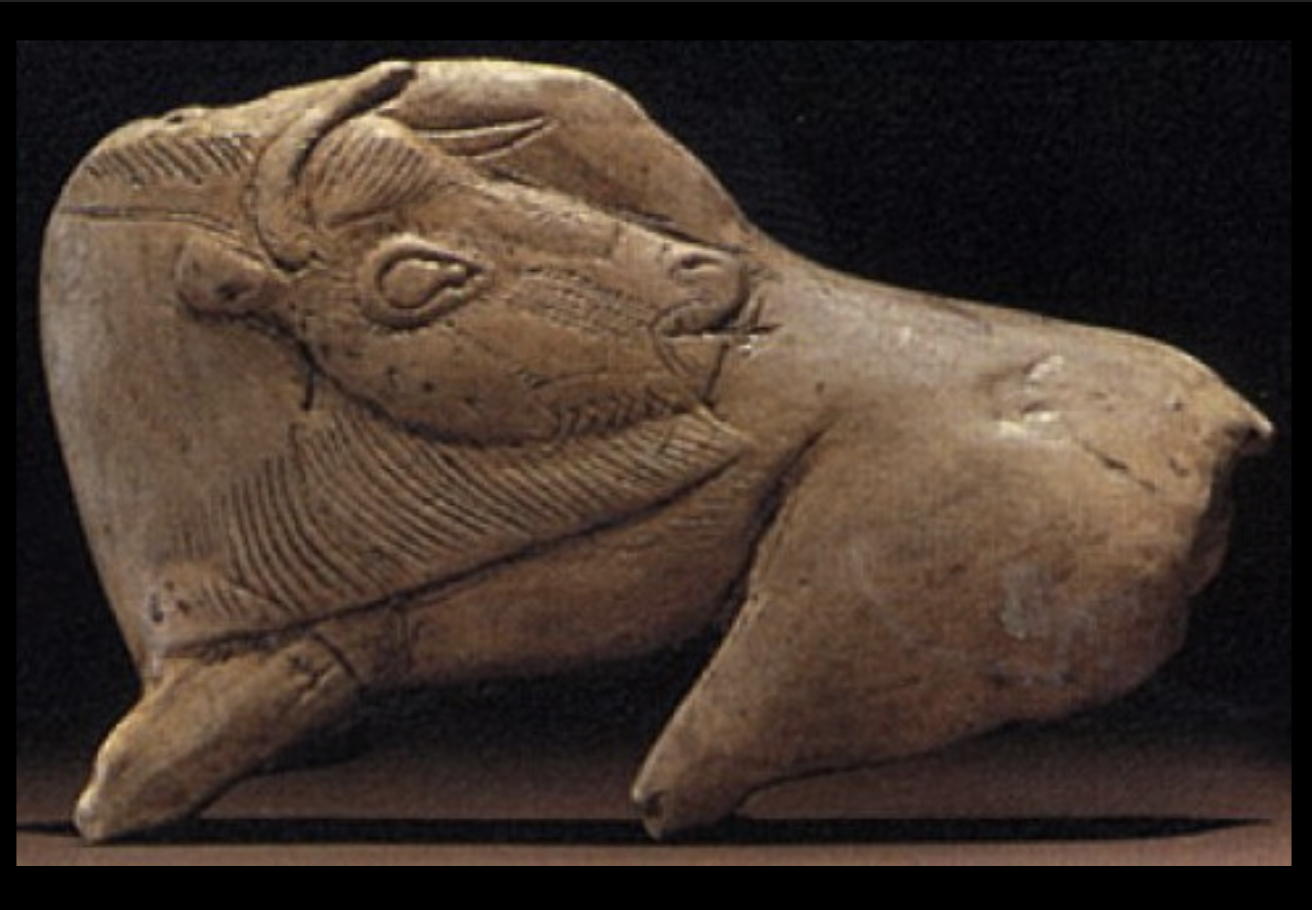
Bison with Turned Head
Period: Paleolithic
Location: Dordogne, France (near Lascaux Caves)
Material/Technique: Carved from reindeer antler, used on a spear
Importance: Carved with small tools, showing that the culture (most likely same as artists who made Lascaux caves) had social-stratification
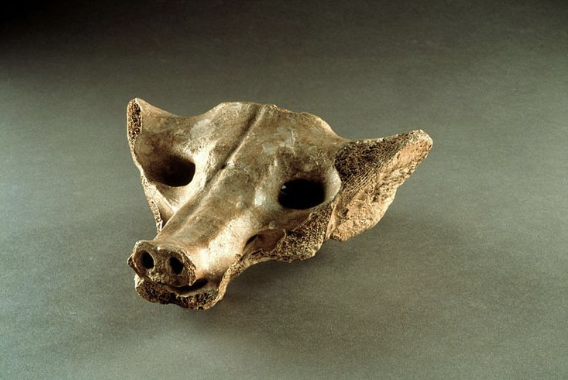
Camelid Sacrum in the Shape of a Canine
Period: Paleolithic
Location: Tequixquiac, Mexico
Material/Technique: Sculpture of a bone of an extinct camel (social-stratification)
Importance: Most likely religious purposes (hunting/worship), one natural form was used to make another natural form
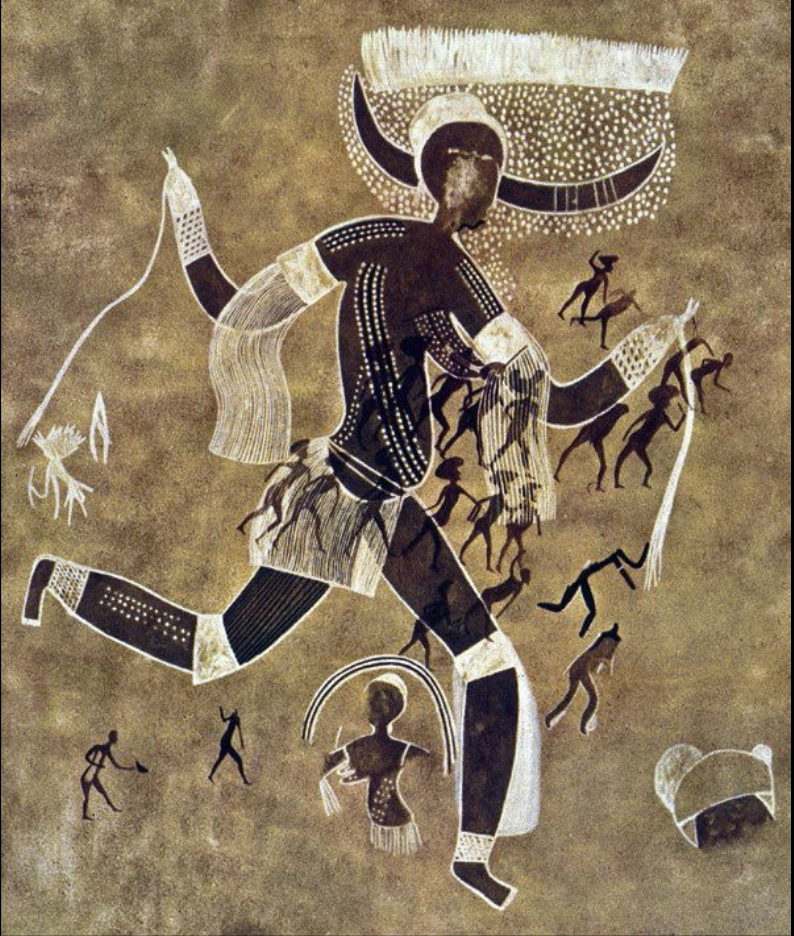
Running Horned Woman
Period: Paleolithic/Neolithic (transition between both periods)
Location: Tassili’ nAjjer, Algeria
Material/Technique: Pigment on rock
Importance: Climate change transformed Sahara from a grassland to a desert, composite view of the body, dots reflect ritualistic makeup
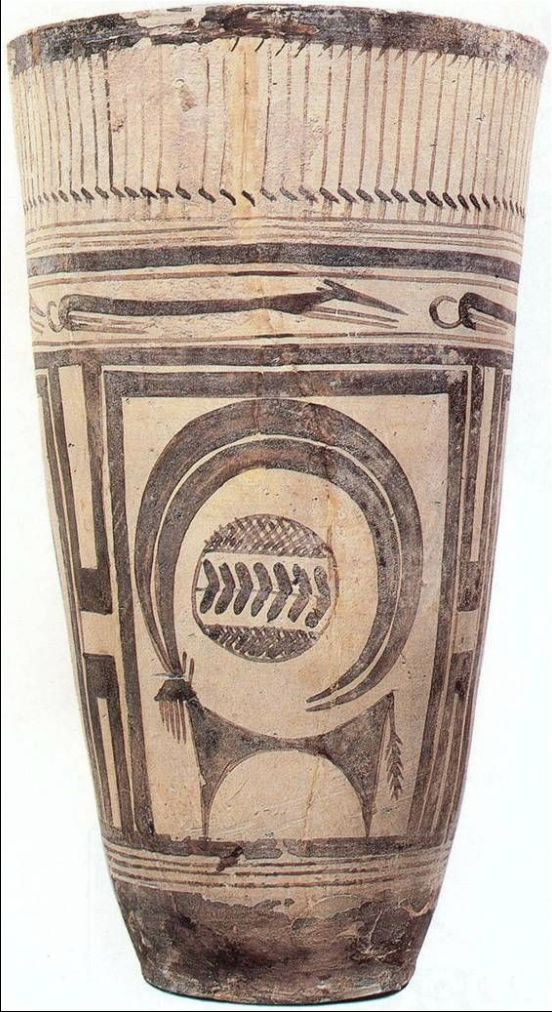
Beaker with Ibex Motifs
Period: Neolithic
Location: Susa, Iran
Material/Technique: Terracotta
Importance: Funerary purposes (found near burial site), might have held ashes, transition from hunter-gatherer lifestyle to residing in villages (requiring storage), middle of horns could be clan symbol identifying the family of the deceased
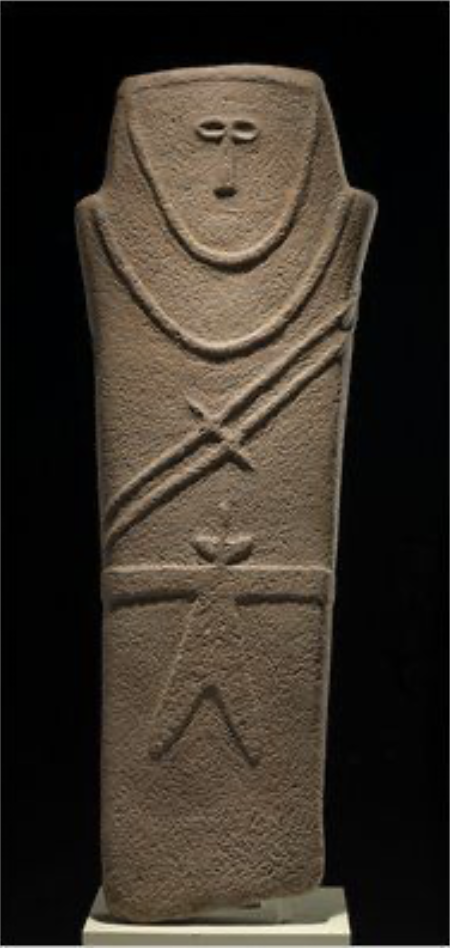
Anthropomorphic Stele
Period: Neolithic
Location: Arabian Peninsula
Material/Technique: Sandstone
Importance: Anthropomorphic (relating to human form), found near ancient trade routes, could be funerary (gravestone) or religious
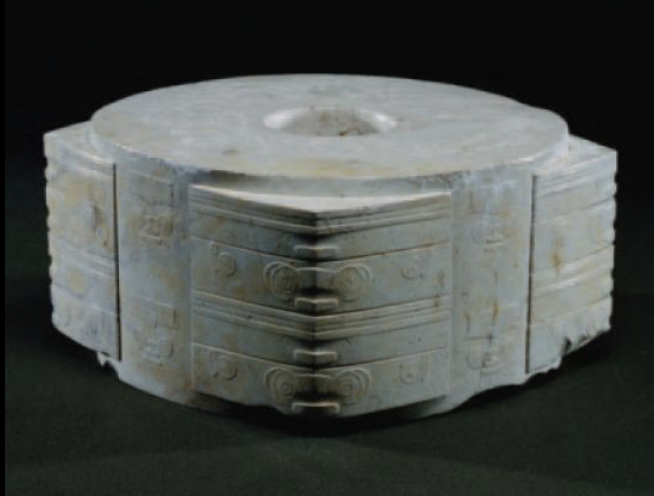
Jade Cong
Period: Neolithic
Location: Liangzhu, China
Material/Technique: Jade
Importance: Jade appears at burial sites of elites (funerary), placed in and around bodies, many seem burned, four corners have a face pattern that could be spirits or deities
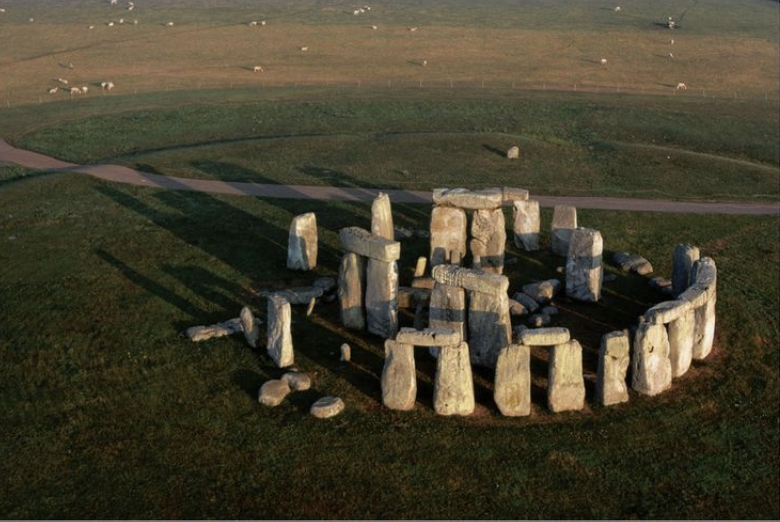
Stonehenge
Period: Neolithic
Location: Wilshire, England
Material/Technique: Sandstone, post (vertical) and lintel (horizontal) construction, mortise and tenon (legos)
Importance: could have oriented sunrise on the longest day of the year, predict eclipses, or that it was a ceremonial center (sacred space) concerning death and burial since bodies were found nearby
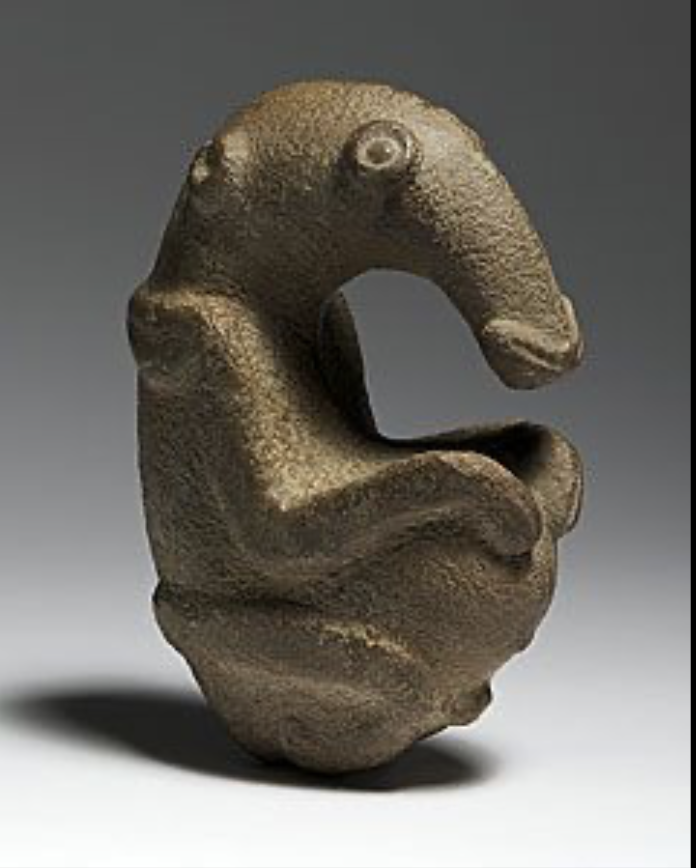
Ambum Stone
Period: Neolithic
Location: Papua New Guinea
Material/Technique: Greywacke stone (stone used to carve stone)
Importance: Anthropomorphic, anteater in fetal position, anteaters were important food source for the island culture
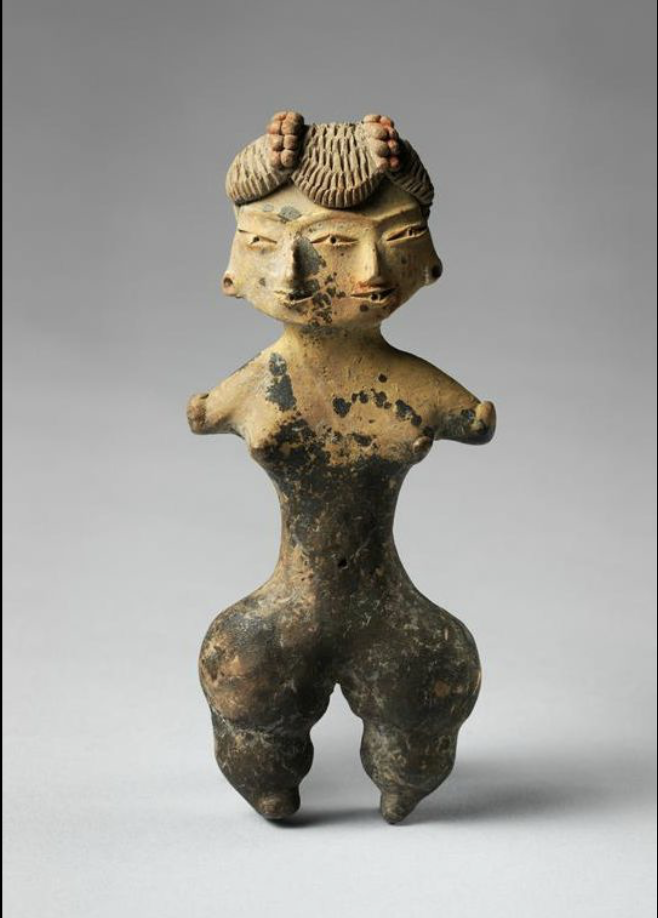
Tlatilco Female Figure
Period: Neolithic
Location: Central Mexico
Material/Technique: Terracotta
Importance: Stylized hair (stratification), shamanistic/religious function
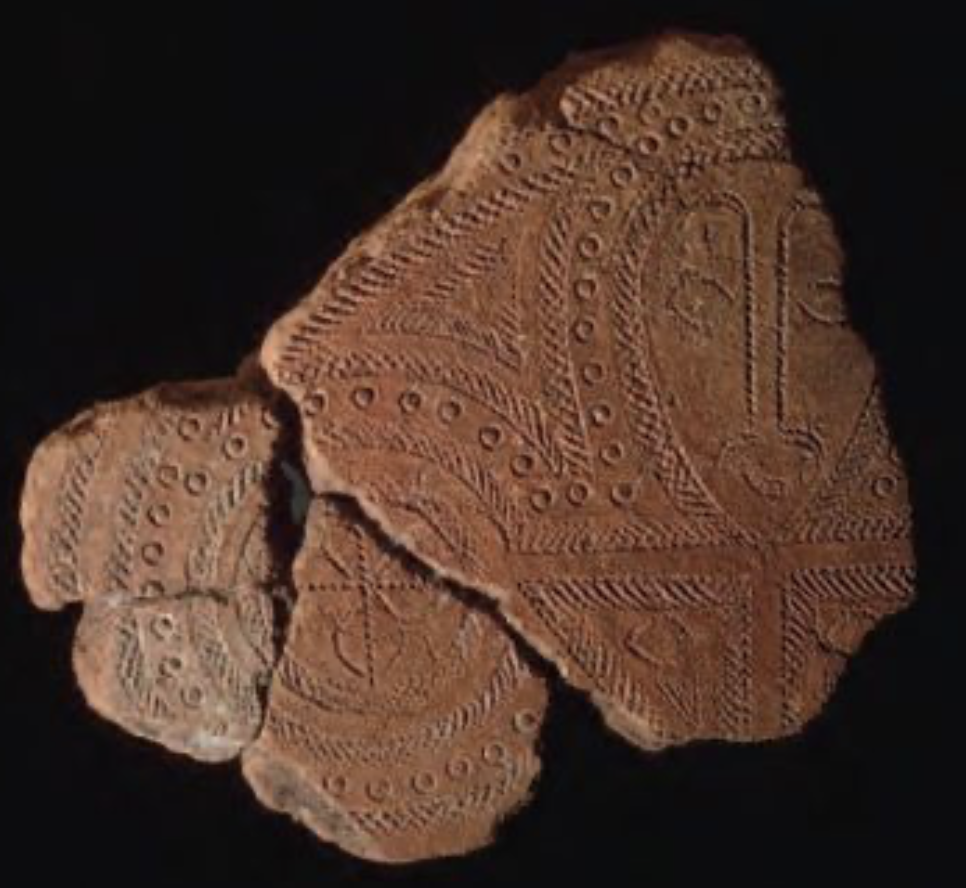
Terracotta Fragments
Period: Neolithic
Location: Solomon Islands
Material/Technique: Terracotta, pottery
Importance: Imagery and style similar to Polynesian cultures, symbolizes cultural history
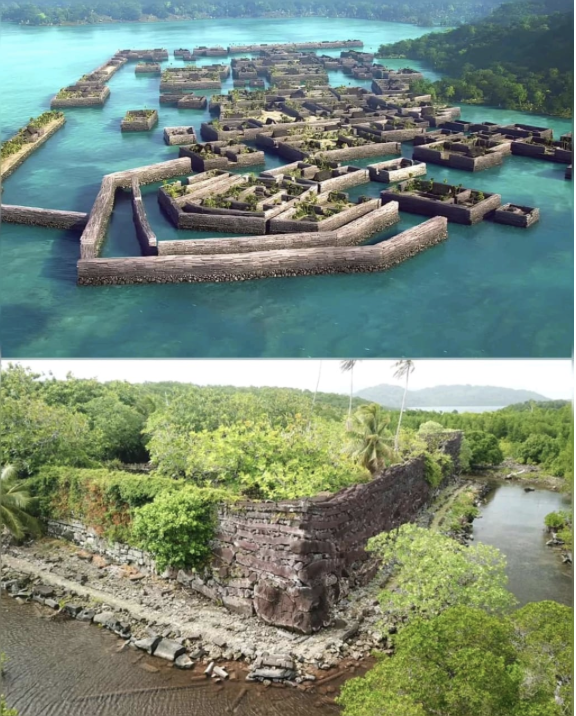
Nan Madol
Period: NR
Location: Ancient Capital city of Saudeleur Dynasty of (Ponpei) Micronesia
Material/Technique: Basalt, coral rock boulders connected by canals
Importance: Built in shallow waters in shape of a boat, allowed trade winds to flow through the city (natural cooling system), canals flushed clean daily by tides, upper class lived close to king (probably seen as a threat), lower classes lived further
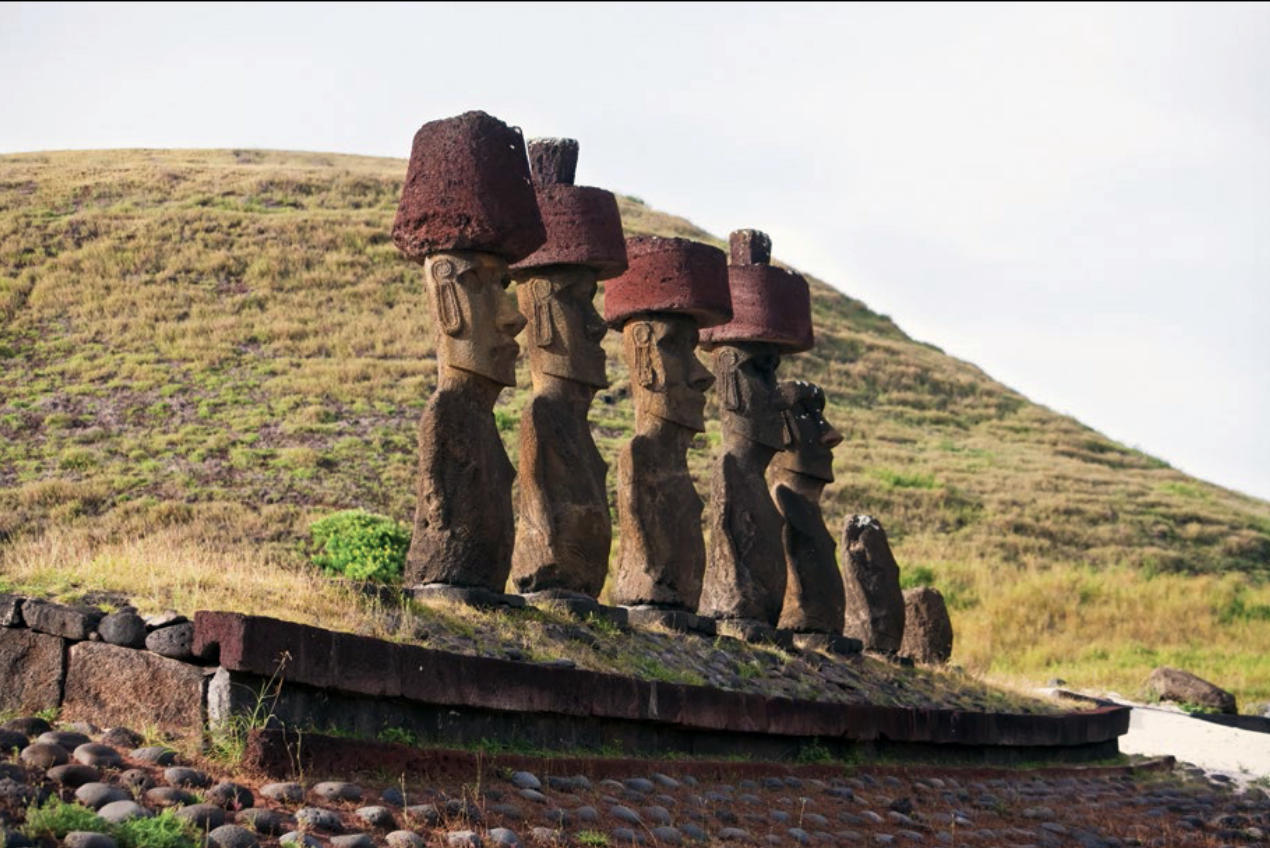
Moai on Platform
Period: NR
Location: Rapa Nui (Easter Island) Chile, Polynesia
Material/Technique: Volcanic tuff (basalt / ash stone), built on platforms of stone
Importance: Platforms mixed with ashes from cremations, both statues and platforms are sacred, images represent chieftains and leaders deified after death, combination of sacredness with power and authority
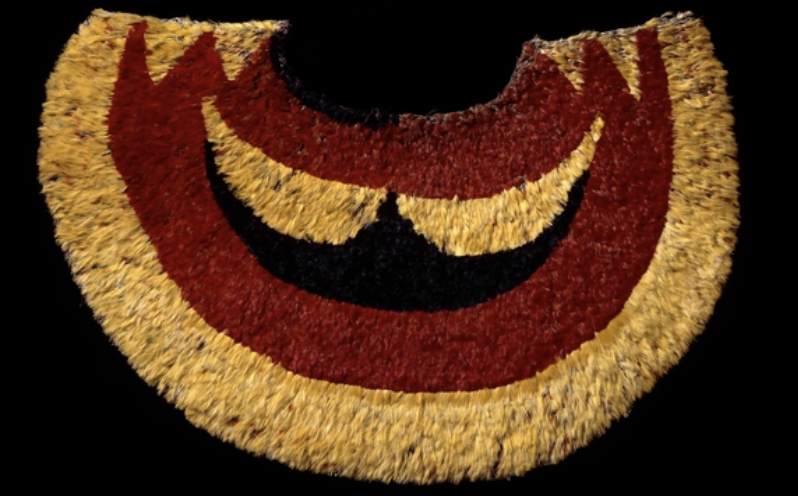
Ahu Ula
Period: NR
Location: Hawaii, Polynesia
Material/Technique: made from 500k bird feathers
Importance: Red represents royal color, artist chanted wearer’s ancestors names while making the cloak to let the cloak help/protect/guide the wearer, status symbol of power and authority

Staff God
Period: NR
Location: Rarotonga, Cook Islands, Polynesia
Material/Technique: Wood, tapa, fiber, and feathers
Importance: Staff placed in common area of a village, most destroyed/knocked over by Christian Missionaries, male and female elements, wooden core made by men, tapa cloth made by women
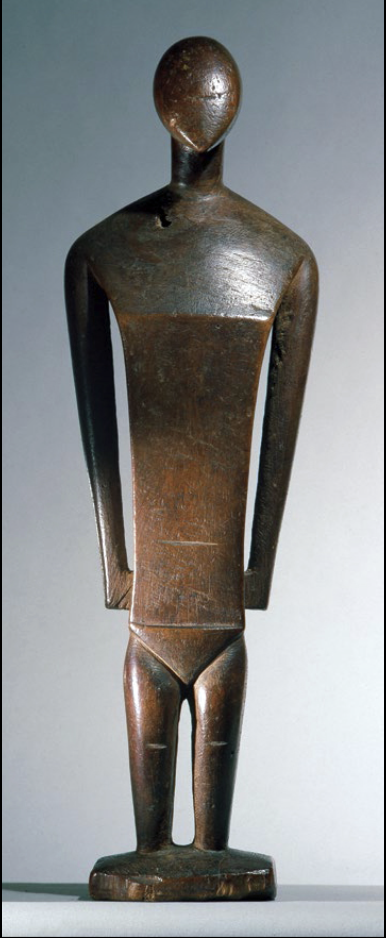
Female Deity
Period: NR
Location: Nukuoro, Micronesia
Material/Technique: breadfruit wood
Importance: Used in ceremonies respecting ancestors, kept in a communal sacred space, honored women/female deities (divine/goddesses), in ceremonies the figure would be clothed
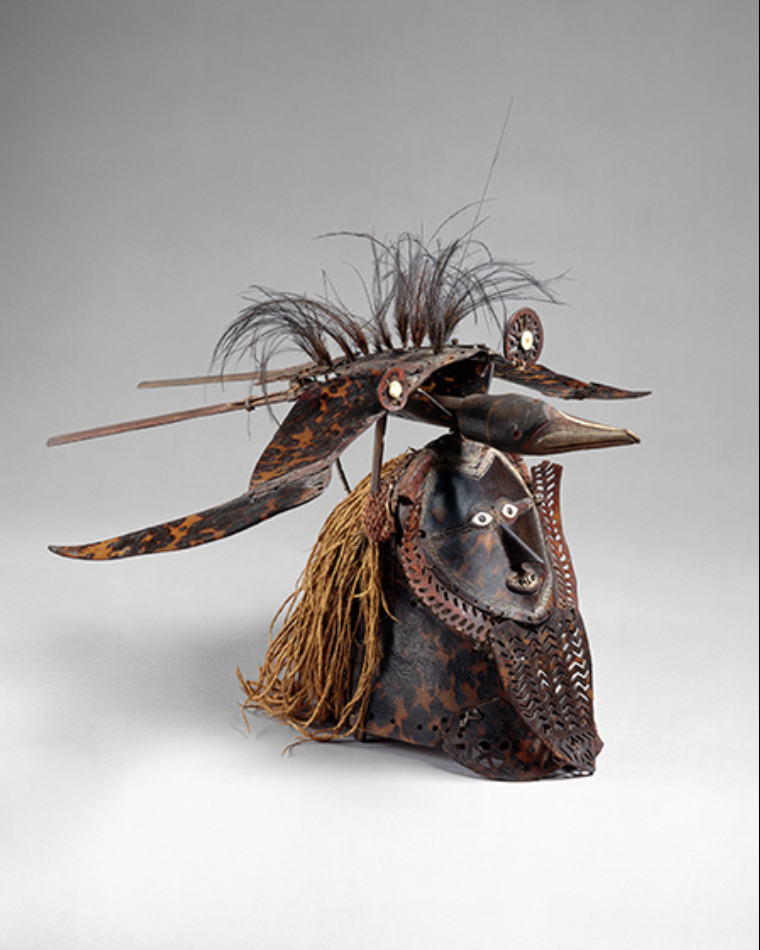
Buk Mask
Period: NR
Location: Torres Strait, Melanesia (btwn Papua New Guinea and Australia)
Material/Technique: Turtle shell, wood, fiber, feathers, sea shells
Importance: Ceremonies related to death, fertility, and male initiation, which included fire, drumming, chanting, and recreated stories of ancestors and the power of their ancestors in modern lives
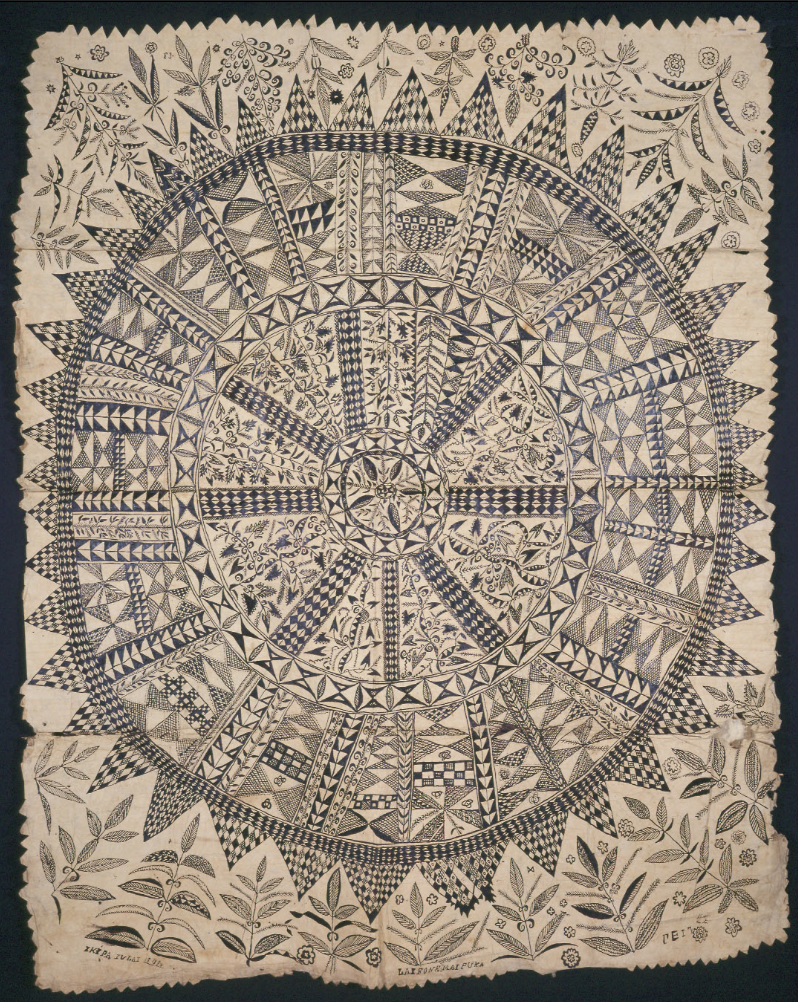
Hiapo (tapa)
Period: NR
Location: Niue, Polynesia
Material/Technique: Tapa (bark cloth)
Importance: Commemorating an event, honoring a chief, noting ancestors, each symbol or set of symbols has a meaning, women’s art, can serve as a symbol of status and rank
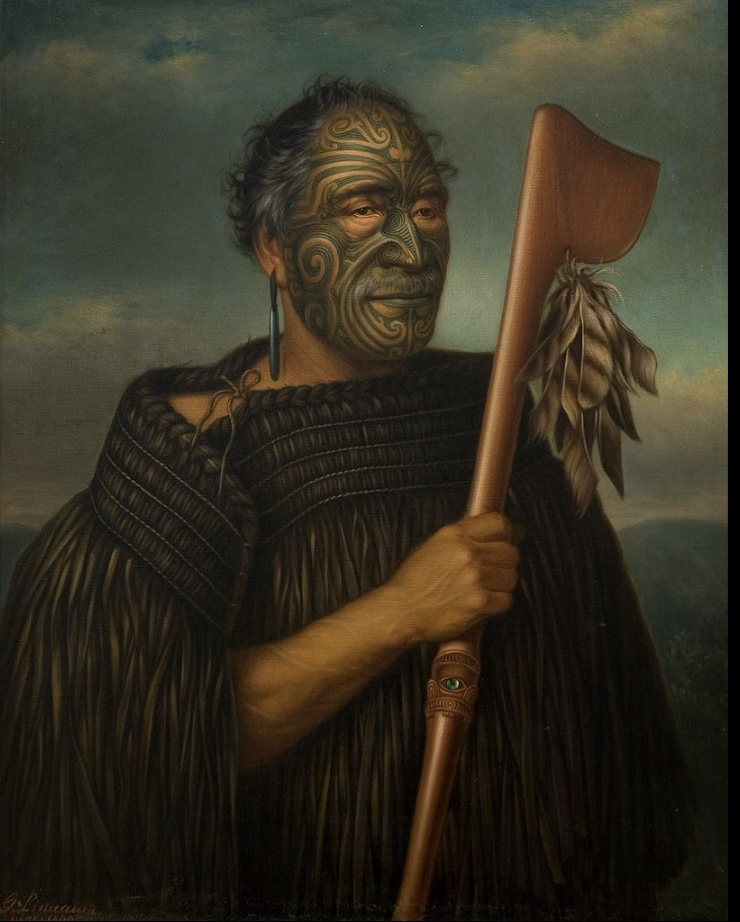
Tamati Waka Nene
Period: NR
Artist: Gottfried Lindauer
Patron: Henry Partridge
Location: Hokianga, New Zealand, Polynesia
Material/Technique: oil on canvas, painting
Importance: Made after his death (posthumous), European style of painting (subject turned to the side, sky in the background), tattoos and stag with eye represent rank, Maori facial tattoos signaled rank as the highest rank had a majority of their face covered, Combination of cultures (European and Maori)
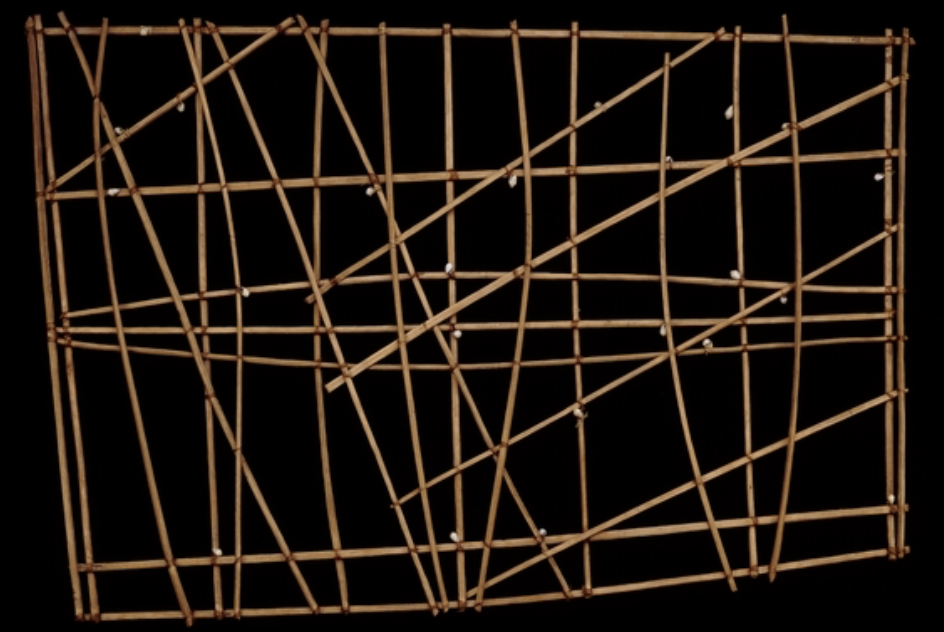
Navigation Chart
Period: NR
Location: Marshall Islands, Micronesia
Material/Technique: Wood and fiber
Importance: Diagonal lines indicate wind and water currents, shells indicate islands, not always used at sea, used for memorization
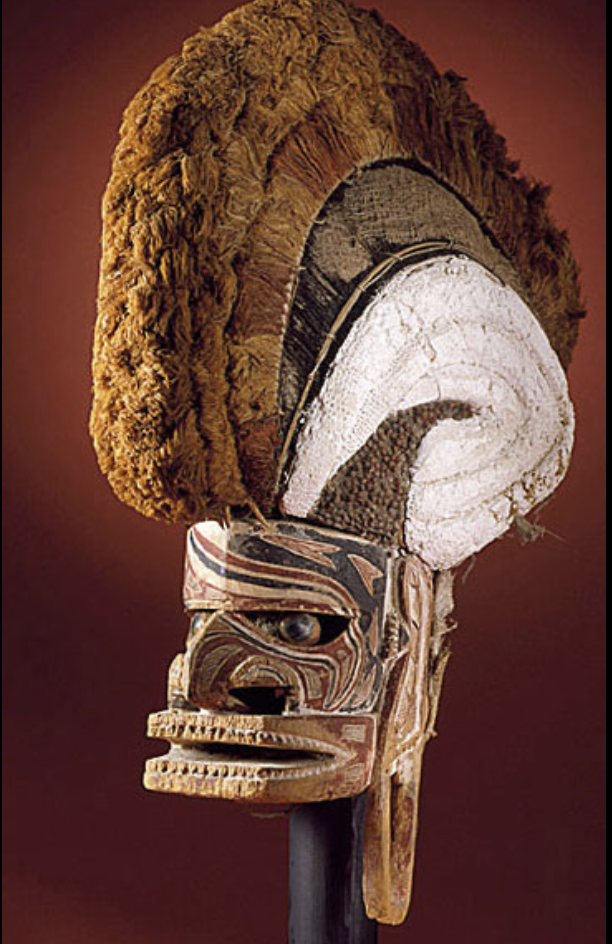
Malangan Mask and Carvings
Period: NR
Location: Papua New Guinea, Melanesia
Material/Technique: Wood, pigment, fiber, shells
Importance: Ancestor worship, highly ritualistic with a natural agricultural surplus, funerary spiritual beliefs dictated that deceased must be guided into the afterlife, carvings are created for the ceremony and left to rot, while the masses are created for the family to stay, portraits of the soul, no two masks are the same, artists were always creating the mask
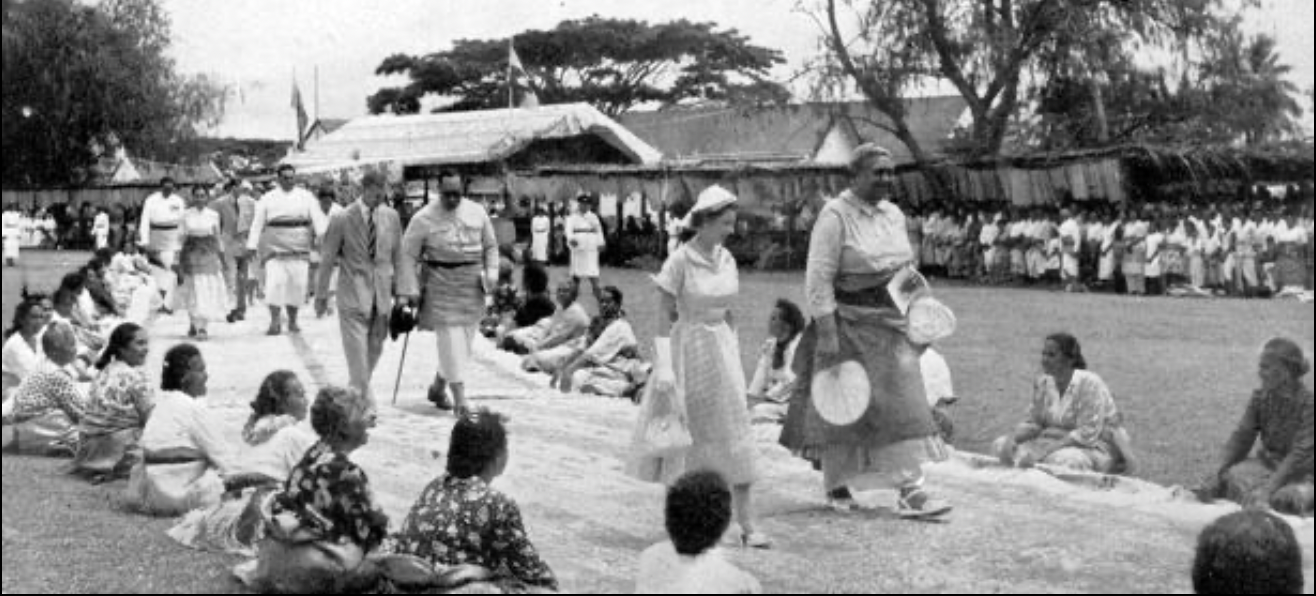
Presentation of Fijian Mats and Tapa Cloths to Queen Elizabeth II
Period: NR
Location: Fiji, Melanesia
Material/Technique: Tapa
Importance: Imagery of crowns (Combination of cultures, European and Fijian), geometric patterns, and Fijian floral motifs, Tapa is a sign of wealth and status, and Elizabeth is given a large amount reserved for a chief